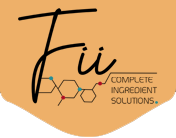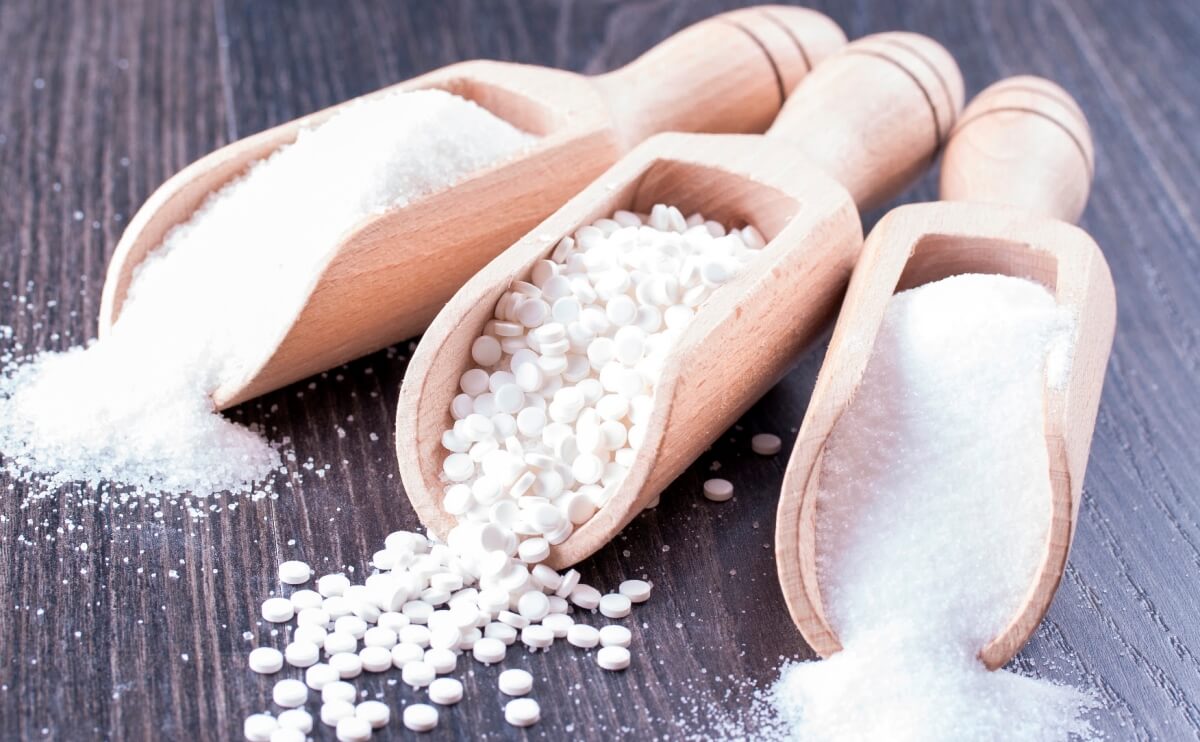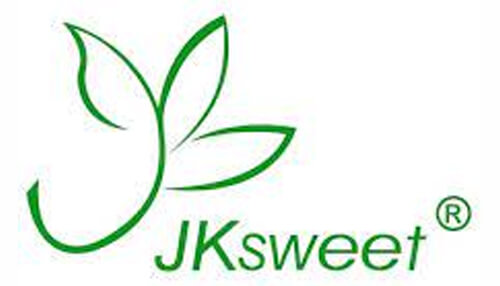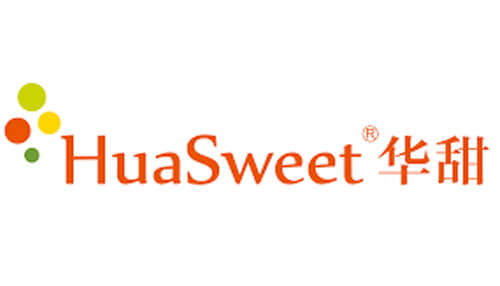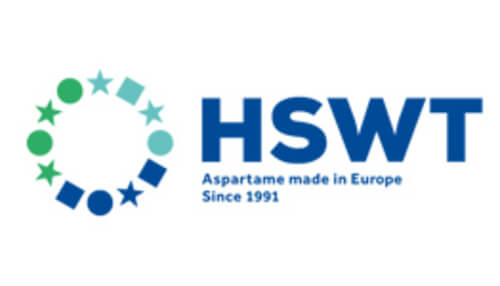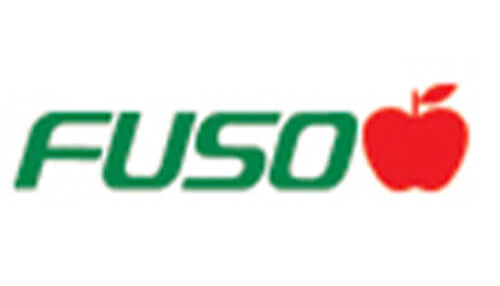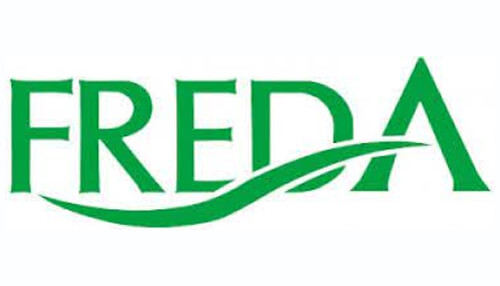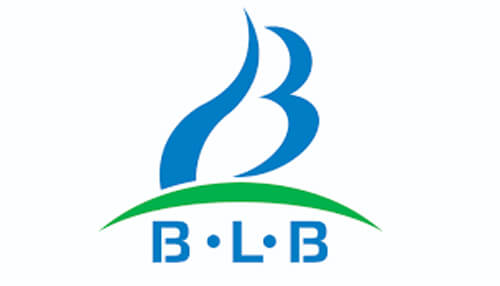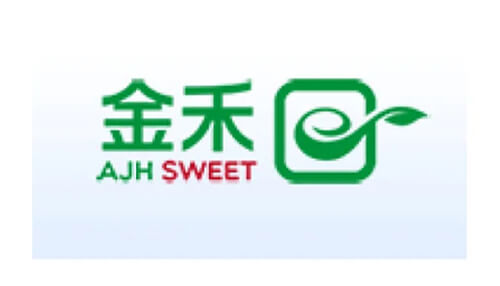High-intensity sweeteners are commonly used as sugar substitutes or sugar alternatives because they are many times sweeter than sugar but contribute only a few to no calories when added to foods. High-intensity sweeteners, like all other ingredients added to food in the United States, must be safe for consumption.
What are high-intensity sweeteners?
High-intensity sweeteners are ingredients used to sweeten and enhance the flavor of foods. Because high-intensity sweeteners are many times sweeter than table sugar (sucrose), smaller amounts of high-intensity sweeteners are needed to achieve the same level of sweetness as sugar in food. People may choose to use high-intensity sweeteners in place of sugar for a number of reasons, including that they do not contribute calories or only contribute a few calories to the diet. High-intensity sweeteners also generally will not raise blood sugar levels.
How does FDA regulate the use of high-intensity sweeteners in food?
A high intensity sweetener is regulated as a food additive, unless its use as a sweetener is generally recognized as safe (GRAS). The use of a food additive must undergo premarket review and approval by FDA before it can be used in food. In contrast, use of a GRAS substance does not require premarket approval. Rather, the basis for a GRAS determination based on scientific procedures is that experts qualified by scientific training and experience to evaluate its safety conclude, based on publically available information, that the substance is safe under the conditions of its intended use. A company can make an independent GRAS determination for a substance with or without notifying FDA. Regardless of whether a substance is approved for use as a food additive or its use is determined to be GRAS, scientists must determine that it meets the safety standard of reasonable certainty of no harm under the intended conditions of its use. This standard of safety is defined in FDA’s regulations.
Which high-intensity sweeteners are permitted for use in food?
Six high-intensity sweeteners are FDA-approved as food additives in the United States: saccharin, aspartame, acesulfame potassium (Ace-K), sucralose, neotame, and advantame.
GRAS notices have been submitted to FDA for two types of high-intensity sweeteners (certain steviol glycosides obtained from the leaves of the stevia plant (Stevia rebaudiana (Bertoni) Bertoni) and extracts obtained from Siraitia grosvenorii Swingle fruit, also known as Luo Han Guo or monk fruit).
In what foods are high-intensity sweeteners typically found?
High-intensity sweeteners are widely used in foods and beverages marketed as “sugar-free” or “diet,” including baked goods, soft drinks, powdered drink mixes, candy, puddings, canned foods, jams and jellies, dairy products, and scores of other foods and beverages.
How do I know if high-intensity sweeteners are used in a particular food product?
Consumers can identify the presence of high-intensity sweeteners by name in the ingredient list on food product labels.
Are high-intensity sweeteners safe to eat?
Based on the available scientific evidence, the agency has concluded that the high-intensity sweeteners approved by FDA are safe for the general population under certain conditions of use. For certain highly-purified steviol glycosides and extracts obtained from monk fruit, FDA has not questioned the notifiers’ GRAS determinations under the intended conditions of use described in the GRAS notices submitted to FDA.
Are there any high-intensity sweeteners that should be avoided by some people?
Consumers with phenylketonuria (PKU), a rare genetic disorder, have a difficult time metabolizing phenylalanine, a component of aspartame, and should avoid or restrict aspartame consumption. Sensitive consumers can avoid food products containing aspartame by looking at the label of such products, which must include a statement to inform phenylketonurics that the product contains phenylalanine.
How much high-intensity sweetener is safe to eat?
During premarket review, FDA established an acceptable daily intake (ADI) level for each of the five high-intensity sweeteners approved as food additives. An ADI is the amount of a substance that is considered safe to consume each day over the course of a person’s lifetime. For each of these sweeteners, FDA determined that the estimated daily intake even for a high consumer of the substance would not exceed the ADI. Generally, an additive does not present safety concerns if the estimated daily intake is less than the ADI. For more information, please see the summary table of high-intensity sweeteners at Additional Information about High-Intensity Sweeteners Permitted for Use in Food in the United States.
In the case of steviol glycosides, an ADI was established by the Joint Food and Agricultural Organization/World Health Organization Expert Committee on Food Additives (JECFA). An ADI has not been specified for monk fruit.
What should I do if I think I am having a reaction to high-intensity sweeteners?
If you believe that you are having an adverse reaction caused by consuming a high-intensity sweetener, stop consuming it and discuss your concerns with your health care provider.
You or your health care provider can report adverse events to FDA in the following ways:
- By phone at 240-402-2405
- By email at CAERS@cfsan.fda.gov
- By mail at: FDA, CAERS, HFS-700, 2A-012/CPK1, 5100 Paint Branch Parkway, College Park, MD 20740
Are there any high-intensity sweeteners that are currently prohibited by FDA for use in the United States but are used in other countries?
Yes. Cyclamates and its salts (such as calcium cyclamate, sodium cyclamate, magnesium cyclamate, and potassium cyclamate) are currently prohibited from use in the United States. Whole-leaf and crude stevia extracts are subject to an Import Alert and are also not permitted for use as sweeteners. (Note: These forms of stevia are different from certain highly purified steviol glycosides obtained from stevia leaves, which have been the subjects of GRAS notices; FDA has not objected to the use as sweeteners of these highly refined substances.)
Are there other sugar substitutes that are not high-intensity sweeteners?
Yes. Sugar alcohols, another class of sweeteners, can be used as sugar substitutes. Examples include sorbitol, xylitol, lactitol, mannitol, erythritol, and maltitol. The sweetness of sugar alcohols varies from 25% to 100% as sweet as sugar. Sugar alcohols are slightly lower in calories than sugar and do not promote tooth decay or cause a sudden increase in blood glucose. They are used primarily to sweeten sugar-free candies, cookies, and chewing gums.
Original Source :- https://www.fda.gov/food/food-additives-petitions/high-intensity-sweeteners
